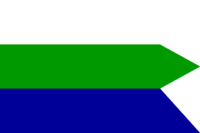Storvani language: Difference between revisions
Jump to navigation
Jump to search
m (Fixed table, again) |
m (Fixed link to IPA) |
||
| Line 2: | Line 2: | ||
| name = Storvani language | | name = Storvani language | ||
| altname = Strovan, Storvanic | | altname = Strovan, Storvanic | ||
| nativename = | | nativename = Storvançī | ||
| acceptance = | | acceptance = | ||
| image = StorvanicEthnicFlag.png | | image = StorvanicEthnicFlag.png | ||
| Line 8: | Line 8: | ||
| imagealt = | | imagealt = | ||
| imagecaption = Ethnic flag of Storvans | | imagecaption = Ethnic flag of Storvans | ||
| pronunciation= [[wikipedia:International Phonetic Alphabet|/ | | pronunciation= [[wikipedia:International Phonetic Alphabet|/stɔrvanʧɪː/]] [[File:Speaker Icon.svg|13px|link=http://ipa-reader.xyz/?text=st%C9%94rvan%CA%A7%C9%AA%CB%90&voice=Liv]] | ||
| states = {{Tree list}} | | states = {{Tree list}} | ||
*{{flag|Zhousheng}} | *{{flag|Zhousheng}} | ||
Revision as of 19:24, 7 March 2021
| Storvani language | |
|---|---|
| Strovan, Storvanic | |
| Storvançī | |
 Ethnic flag of Storvans | |
| Pronunciation | /stɔrvanʧɪː/ |
| Native to | |
| Region | Storvan island |
| Ethnicity | Storvani Imperial settlers |
Native speakers | L1: ~470,000 L2: ~470,000 FL: <80,000 |
Thuado-Thrismaran languages
| |
Early form | Odɫuçina/Odluчina[1]
|
| Official status | |
Official language in | |
Recognised minority language in | |
| Language codes | |
| ISO 639-1 | ST |
| ISO 639-2 | STO |
| ISO 639-3 | STO |
| File:StorvaniLangMap.png Distribution of the language Absolute majority >30% of native speakers | |
Alphabet
| Aa /a/ |
Āā /aː/ |
Bb /b/ |
Cc /ʦ/ |
Çç /ʧ/ |
Dd /d/ |
Ɗɗ /ɟ/ |
Ee /ɛ/ |
Ēē /ɛː/ |
Ff /f/ |
Gg /g/ |
| Hh /ɦ/ |
Ii /i/ |
Īī /iː/ |
Jj /j/ |
Kk /k/ |
Ll /l/ |
Ɫɫ /ʟ ~ w/ |
Mm /m/ |
Nn /n/ |
Ɲꬻ /ɲ/ |
Oo /ɔ/ |
| Ōō /ɔː/ |
Pp /p/ |
Qq /q/ |
Rr /r/ |
Ɽꭉ /ʀ/ |
Ss /s/ |
Ȿȿ /ʃ/ |
Әә /ə/ |
Ә̄ә̄ /əː/ |
Tt /t/ |
Ƭƭ /c/ |
| Uu /u/ |
Ūū /uː/ |
Vv /v/ |
Ƿƿ /w ~ ʋ/ |
Xx /ks/ |
Yy /ɪ/ |
Ȳȳ /ɪː/ |
Zz /z/ |
Ɀɀ /ʒ/ |
- ↑ The term "Odluчina" comes from Bogmian verb "Odluчiꞇi", meaning "To seperate". The term comes from the separation of the settlers during the Empire of Three Kings from the rest of the country, which caused their separation and linguistic differentiation from the original mix of Bogmian and Zhengian settlers, intermixing mainly with the Borelian aboriginals.